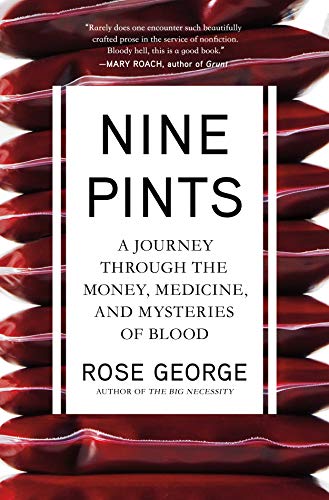Aging Gracefully: How to Access Skilled Nursing Facilities
Marla Feinstein
Navigating insurance issues while you’re aging is a new field, particularly for our community. The good news is that bleeding disorder patients are aging—living longer—and can access more treatment options, including surgery. And they face the medical issues typically associated with aging, but sooner than people without a chronic condition. Complications from hemophilia can increase the likelihood of patients needing surgery for damaged joints or liver ailments. To help facilitate recovery while ensuring that their bleeding disorder and complications are adequately managed following surgery, a treating physician may recommend that some patients be placed in a skilled nursing facility (SNF) immediately after being discharged from the hospital.
SNFs are ideal for patients because they provide short-term, intensive, inpatient rehabilitative services. And SNFs also have the medical and nursing expertise to provide a level of care far beyond what’s available to patients who are treated at home. These services are often critical for optimal recovery.
Unfortunately, it has become increasingly difficult for some patients with bleeding disorders to get admitted into SNFs. The reasons for denial vary. Some SNFs have concerns about the type of specialized care that bleeding disorder patients require. Not surprisingly, the primary reason that SNFs deny access is the cost of and reimbursement for factor concentrates. This difficulty exists regardless of the type of insurance coverage (Medicaid, Medicare, or private) and doesn’t appear to be related to any other conditions patients may have, such as HIV or hepatitis C.
How to Pay for Skilled Nursing Facilities?
Understanding exactly how insurers reimburse for factor concentrates administered in SNFs is difficult. This is partly due to the limited number of patients needing the level of care provided at an SNF. It’s also partly due to lack of public information regarding how SNFs are reimbursed by private payers, while state-to-state variability makes it hard to understand Medicaid.
In contrast, Medicare provides very specific guidelines for how SNFs will be reimbursed for factor for all beneficiaries. In general, Medicare pays for different types of care and services under Parts A, B, C, and D. The type of facility, and whether services are provided as inpatient or outpatient, defines how Medicare covers all patients.
Generally, Medicare bundles reimbursement for all the services provided to a patient that are associated with an SNF stay, including nursing, therapy, drugs, supplies, equipment, room and board, and administration. This bundled, lump-sum payment is expected to cover all of the daily operating costs for running and staffing a post-acute care facility such as an SNF, but it doesn’t even come close to covering the high cost of factor concentrate (often exceeding $10,000 a day) for bleeding disorder patients during an SNF stay. Without receiving adequate reimbursement, the SNF will not be able to accept bleeding disorder patients.
Proposing a Partial Solution
It may be challenging for a patient to gain access to an SNF when there are limited or conflicting guidelines regarding how SNFs should bill for services. Though reimbursement for SNFs can be complex when working with any payer, for Medicare, at least, there is a legislative fix.
The Medicare SNF statute allows certain costly, highly specialized services that SNFs do not typically provide to be billed separately under Medicare Part B.1 Services that can be billed separately include chemotherapy, radioisotopes, certain types of prosthetics, and erythropoietin for dialysis patients. National Hemophilia Foundation (NHF) seeks to add factor concentrate to the list of services that can be billed separately under Medicare Part B for patients with hemophilia and other related bleeding disorders during an SNF stay. The rationale is that providing factor concentrate to patients is comparable to the specialized services Medicare recognizes as needing separate treatment.
Advocating for Change
In 2014, over 300 bleeding disorder patients and families went to Capitol Hill in Washington, DC, to advocate and educate on behalf of Medicare beneficiaries unable to access SNFs. They came close to having bipartisan legislation introduced. Over the next year, NHF will continue to find legislators who are willing to introduce a bill that would change how factor concentrates are reimbursed for patients in SNFs, allowing people with bleeding disorders to access these facilities. We hope this will happen before NHF’s Washington Days in February 2016.
It’s important to remember that passing legislation will take time, and will solve the issue of access only for Medicare patients who need to be placed in an SNF. Patients on Medicaid and private insurance (including employer groups, small and large group, and self-insured) may still have trouble accessing SNFs. We hope that once Medicare addresses the issue, Medicaid and private insurers will follow.
Based largely on their experiences with Medicare, and fearing the astronomical costs of bleeding disorder patients, SNFs are reluctant to accept even patients who have other insurance. NHF has successfully placed patients with different types of insurance in a variety of facilities, when we can work with the facility and explain how to properly bill for factor. Though not ideal, educating facilities about the unique needs of the bleeding disorder community helps ensure that patients can get the care they need.
Aging gracefully comes with its own set of challenges—especially for people with bleeding disorders. Coping with these challenges may be complicated, but the good news is that you’re not alone: there are resources to help. NHF’s public policy team has been hard at work trying to address how patients can best access the appropriate sites of care for the services they need. Although there isn’t always a clear path with simple answers, our goal is to facilitate and help ease transitions, allowing all patients to age gracefully.
| Finding the appropriate skilled nursing facility takes time and resources, so be prepared. Educate yourself, payers, and the SNFs, keeping these considerations in mind: ACCESS Post-acute care comes at a cost. When thinking about the type of care you need, determine who pays for what services, in what setting, and when. 1. Who pays: Types of insurance Public Medicare Medicaid Dual Private Individual plan Employer sponsored Public–private combination 2. Type of care needed: Depends on the situation Settings: Facility types and locations Locations of acute care facilities include Hospitals Nursing homes Rehabilitation hospitals Hospice centers Long-term care hospitals (LTCH) Stand-alone facilities Determination of placement depends on Amount of rehab therapy patient gets Patient’s ability to perform activities of daily living RESOURCES Consider both financial and emotional resources. This process is hard on everyone: patients, families, and caregivers. 1. Financial Short term Long term 2. Emotional Family, friends, caregivers HTC social worker Support groups Assistance and support services HTC providers (doctor, surgeon, physical therapist) HTC case manager Insurer NHF’s public policy team |
For additional information about Medicare coverage of SNFs: www.medicare.gov/coverage/skilled-nursing-facility-care.html
Marla Feinstein is a policy analyst for NHF. She is instrumental in advocating for the bleeding disorder community at the national and state level. Her current efforts focus on ensuring access to care for people with bleeding disorders. She has presented on behalf of NHF at numerous national- and community-based meetings of government and industry stakeholders.
- Centers for Medicare & Medicaid Services (CMS) Consolidated Billing Background: http://www.cms.gov/Medicare/Medicare-Fee-for-Service-Payment/SNFPPS/ConsolidatedBilling.html. CMS Overview on Skilled Nursing Facility (SNF) Consolidated Billing (CB): http://www.cms.gov/Medicare/Billing/SNFConsolidatedBilling/Index.html.





